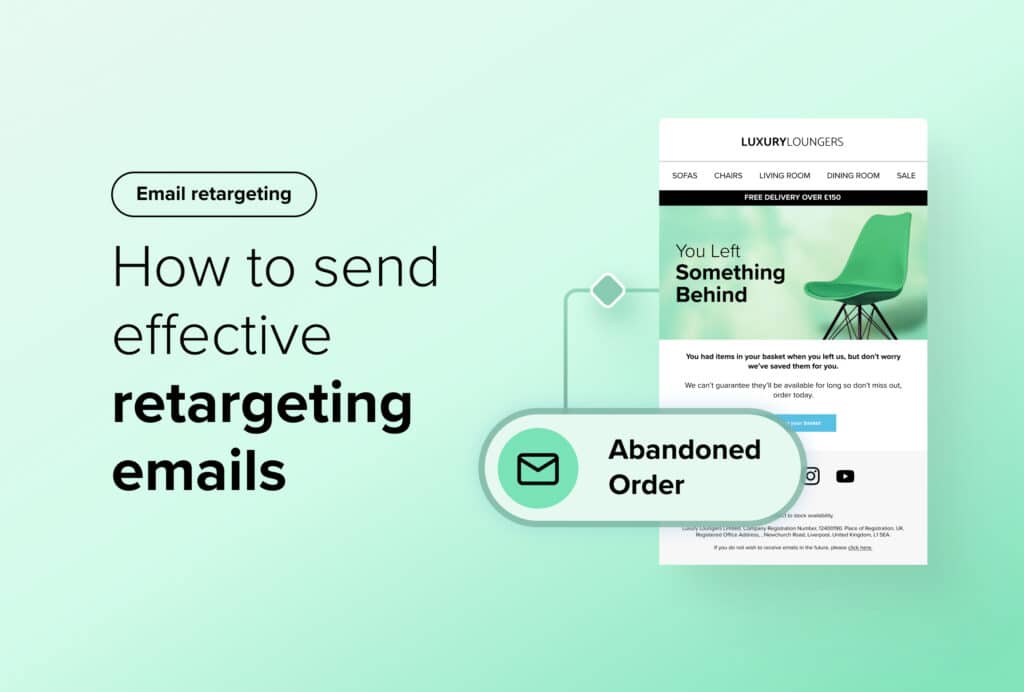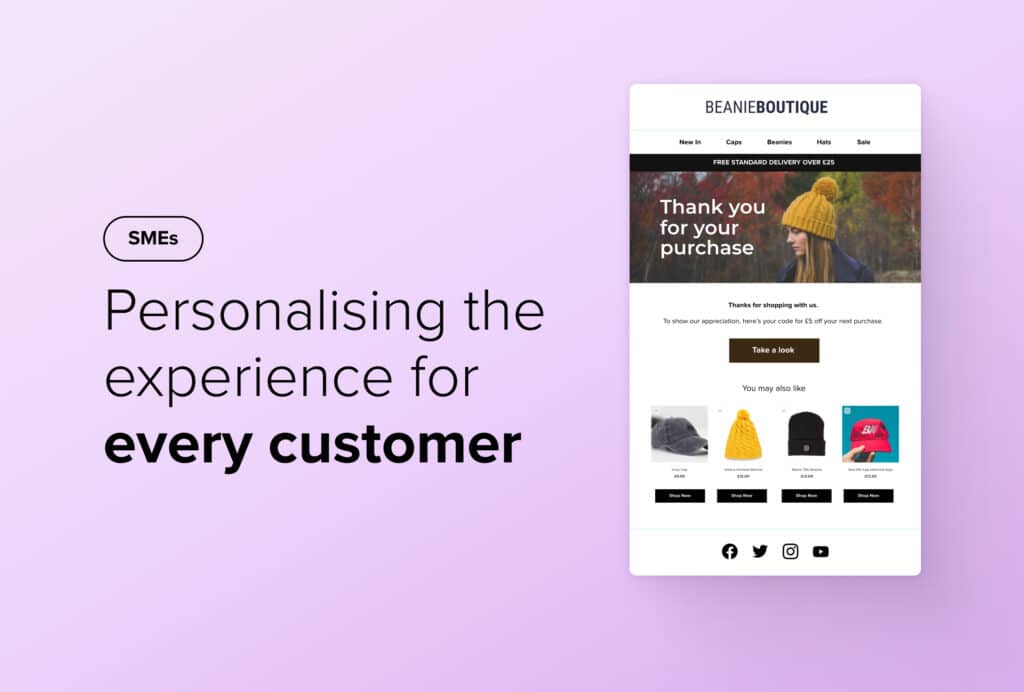5 Ways to Solve Your eCommerce Site’s Low Customer Retention
By Courtney O'Riordan • Last updated: Wednesday May 1st, 2024
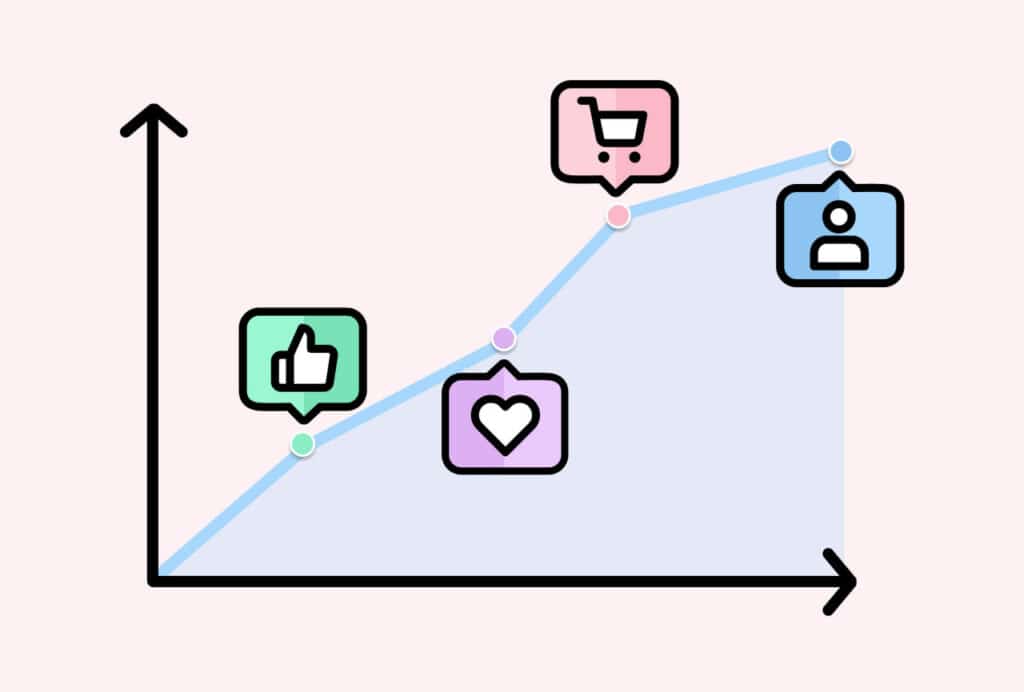
Customer acquisition is an increasing cost for eCommerce sites, not only from a financial perspective but also in terms of time, effort, and resources.
There has long been a belief that attracting new customers is synonymous with growing an eCommerce business, but that isn’t necessarily the solution. Instead, retaining loyal customers is one of the most sustainable methods of growth.
The long-term success of your business is largely dependent on building and nurturing relationships with existing shoppers, who are responsible for generating 68% of sales.
The problem is that loyal customers aren’t easy to come by.
Robust customer retention strategies are key to combating reduced retention rates caused by the decline in loyalty and the increase in online competition, particularly amongst Gen Z customers.
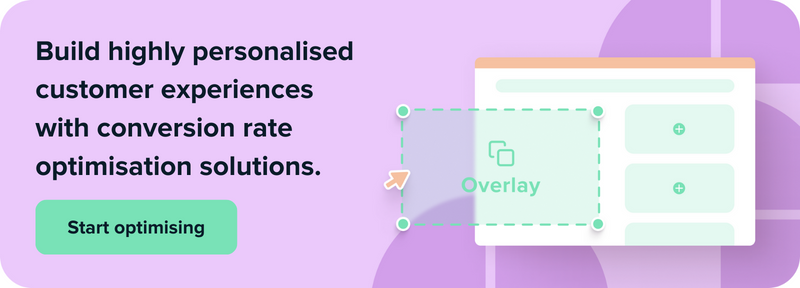
What is customer retention?
Customer retention refers to the rate at which customers return to a company’s site to make repeat purchases during a specific period of time.
Contrary to what this simplified definition might suggest, there is much to be discussed when it comes to customer retention.
For example, it isn’t only about selling great products to repeat customers — although this is vital. Instead, customer retention is a multi-faceted measurement of how loyal your customer base is.
Once you know your retention rate, it can then be used to inform strategies that fit your consumer’s shopping behaviour.
From their very first on-site interaction with you to the customer service you deliver post-purchase, the value you provide shoppers throughout their overall experience with your business contributes to their decision to remain loyal.
Now that we’ve discussed what customer retention is, let’s delve into how it can affect your business.
Customer Retention FAQs
Why should I focus on retaining customers as opposed to acquiring new customers?
Focusing on improving your customer retention strategy eliminates the need to spend so much on customer acquisition. After all, it costs 6 to 7 times more to gain a new customer than to keep one. And since you’ve already spent time and money acquiring customers in the first place, capitalising on this with retention strategies is a cost-effective approach to drive revenue.
Can high customer retention rates improve the longevity of my business?
Returning buyers provide long-term, reliable revenue sources for your site. Since you’ve already engaged customers enough to make a purchase in the first place, they are invested in your brand and so are more easily persuaded to order again.
How can increasing my retention rates help me to compete with competitors?
Maintaining customer loyalty prevents your customers from dropping off-site and heading to a competitor. The more value you can provide your customers through tactics such as personalised recommendations and exclusive offers for existing customers, the greater the advantage you can have over your competitors.
How can I increase my customer retention rate?
Creating a brilliant customer experience for regular visitors across all of your practices and strategies is key to gaining customer loyalty. This can be achieved by investing in your customer service practices or optimising your site for a seamless on-site experience.
5 strategies to increase customer retention rates
Since 2020, consumers have become increasingly mindful about where they spend their money and are more willing to shop around with your competitors.
It’s safe to say that the current eCommerce space is not a place where loyalty can naturally flourish, but it can still be achieved with a carefully selected list of priorities and the proper solutions to back them up.
This lies not only in identifying areas for improvement within your current strategies but also in leveraging the customer retention-boosting strategies we have outlined below.
1. Make it personal
A basic customer experience is no longer enough to keep customers engaged.
An effective way to create a strong customer/company bond is through personalisation.
Personalisation is not just a buzzword within the eCommerce industry but a proven solution to increasing engagement.
87% of customers surveyed stated that a personalised experience positively influences how they feel about a brand.
Showing you recognise your customers as individuals can be as simple or intelligent as you desire.
For example, you can include a shopper’s name in the header of a post-purchase email as a quick and easy way to encourage interaction.
Or, you can provide AI-powered Recommendations at every step of the customer journey to show you know your customers’ wants and needs.
Presenting meaningful recommendations based on individual shopping behaviour simplifies the product discovery process and produces quicker conversions.
Customers will thank you for your personalisation efforts by returning to your site and increasing customer retention rates.
What you can do:
Introduce Salesfire Recommendations to your site to support product discovery tools, increase AOV and improve your overall customer satisfaction.
Related: How to get Website Personalisation Right: The Do’s and Don’ts
2. Spread the word through reviews
You may have the best products in the industry but that doesn’t mean much if you’re the only one claiming it.
Collecting customer reviews will support your claims and add credibility to your products and brand.
Reviews are also essential in replicating a vital step from the in-store shopping journey that is not possible online.
When browsing in-store, shoppers can physically see, touch and, in some cases, test out a product or service before buying.
Reviews are the next best thing to recreating this online. Positive and accurate reviews improve retention by:
- Enhancing customer trust: Transparent and accurate reviews encourage customers to trust a brand enough to repeatedly buy from a store.
- Increasing customer confidence: Well-informed shoppers make confident purchases that will make them want to buy from you again.
- Improving customer satisfaction: Accurate reviews produce consumer expectations that can be successfully met.
Trust, confidence and satisfaction work in tandem from the very first purchase to encourage loyalty.
Reviews are not only meant to be read by on-site browsers but also by you.
The influential and viral nature of social media means one bad review can impact a business.
Take this as an opportunity to interact with those sharing their thoughts and react in a productive way to negative customer feedback.
Engaging with your customer by listening, learning and catering your offering to their wants and needs shows they are of great value to you.
When a site places this level of value on its customers’ opinions, they are viewed as worthy of being loyal to.
Pro tip: Use Overlays to encourage customers to leave reviews during the post-purchase experience. This allows you to gain an accurate representation of their experience and makes their opinion feel valued, generating more loyalty.
3. Harness the power of social proof
In a digital world that fuels the feeling of FOMO, social proof thrives in ways not possible in brick-and-mortar stores.
As we all know too well, buyer’s remorse can happen in an instant, resulting in new or repeat shoppers abandoning their baskets and moving to a competitor.
Luckily, social proof not only inspires interest but also conversions.
Displaying real-time product views and purchases leverages this phenomenon in a way that validates the decision to click ‘add to basket’.
Simply observing other people’s behaviour around a product provides the reassurance and confidence shoppers may need to place an order.
Take ASOS as a case study for success in social proof. Their community of customers generate genuine buzz around products that inspire purchases.
Customers acquired through social proof will have the confidence and satisfaction to buy from you again.
What you can do:
Support the product discovery process with solutions such as Salesfire’s Digital Assistant to display recent views and purchases in an unobtrusive way.
4. Build lasting relationships with rewards
Just as you want customers to value your brand enough to return, you must value your customers enough to build a relationship with them.
Building connections through loyalty programs not only create that mutual value but also increases a customer’s lifetime value by 306%.
While you reward customers with freebies, discounts, or perks, they reward you with their repeat custom.
With the incentive to repeatedly shop with your brand, you seamlessly become ingrained in your customer’s life and routine.
If you’re still not convinced that you should begin a loyalty program, perhaps knowing that loyal customers are not price-driven will give you that final push.
With price sensitivity increasing, there’s value in having a cohort of customers who value experience, acknowledgment, and rewards over cost.
Pro tip:
Utilise the knowledge gained from what and when loyal customers are purchasing to target your marketing efforts more effectively.
5. Be there for your customers
So, you’ve built customer relationships. Now it’s time to maintain them should an issue present itself.
No matter how great your buying experience is, it’s natural for your loyal customers to need to use your customer service at some point.
It could be to ask a question about your returns process or to submit a genuine complaint.
Your customer support should be of a high enough standard to provide information and resolve issues in a timely manner.
Live chat is an effective practice in answering FAQs in an instant to ensure impatience does not cause a customer to drop off.
Don’t make the mistake of assuming a complaint means you have lost loyalty — it’s all about how you respond to it and the subsequent experience your customer receives. After all, 86% of customers surveyed said good customer experience turns one-time clients into long-term brand champions.
What you can do:
Make your customer service easily accessible to maintain a good customer experience by using our Chat tool in Digital Assistant.
Support your success with Salesfire
Although each of these strategies will set you up for consistent success, there will always be additional areas you can improve.
Use the insights provided by tracking and benchmarking tools such as Trends to see what worked for you in previous years and compare yourself to competitors.
Through this, you will gain insight into areas to work on in order to aid your customer retention strategies.
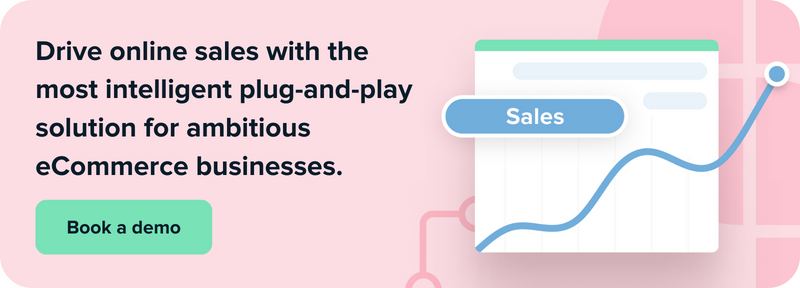
See how Salesfire can help you optimise your product discovery experience, email one of our experts at [email protected] or book a free demo of our personalisation tools.

